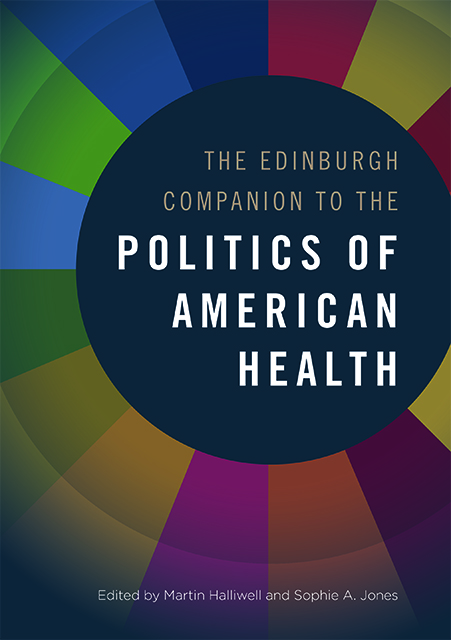Book contents
- Frontmatter
- List of Contents
- Notes on Contributors
- Introduction: The Political Landscapes of American Health, 1945–2020
- I Geography, Community and American Health
- II Critical Health Conditions: Debates and Histories
- III The Politics of Children's Health
- IV The Institutional Matrix of Health Care
- V The White House, Congress and Health Reform
- VI Justice, Ethics and American Health
- VII Public Health and Global Health
- General Bibliography
- Index
19 - The Pharmaceutical Industry, Drug Regulation and US Health Services
Published online by Cambridge University Press: 12 August 2023
- Frontmatter
- List of Contents
- Notes on Contributors
- Introduction: The Political Landscapes of American Health, 1945–2020
- I Geography, Community and American Health
- II Critical Health Conditions: Debates and Histories
- III The Politics of Children's Health
- IV The Institutional Matrix of Health Care
- V The White House, Congress and Health Reform
- VI Justice, Ethics and American Health
- VII Public Health and Global Health
- General Bibliography
- Index
Summary
From the Civil War onwards, American medicine has led the world in turning to technical developments. By the end of World War I, the United States had more hospitals than the rest of the world combined, primarily oriented towards surgery. To this day, Americans outstrip other people in the number of medical devices they have in their bodies and surgical procedures they have undergone. When in the early twentieth century the rest of the Western world turned to universal health insurance to stabilize their democracies, American medicine, in favour of health insurance before World War I, turned in the 1920s instead to hospital insurance – and in the process consolidated the development of Big Medicine.
New medicines and surgical developments exemplify an incursion of technique into health care. By 1900, the United States had become arguably the most pluralistic society in the world with an astonishing mix of ethnicities and religions. A turn to technique and operationalism, which developed in the 1920s with the work of physicist Percy Bridgman and later psychologist B. F. Skinner, was one response for managing pluralism, and may help explain the trajectory of American medicine in the twentieth century. The emergence of new drugs in mid-century intersected with the development of cybernetics in the wake of World War II that further promoted operationalism and a science of management, based on Systems Theory. In the 1980s, the combination of new drugs and a new managerialism transformed health care into health services that have increasingly become drug distribution channels. Where American life expectancy had been the best in the world in mid-century, the US now leads the way among developed countries in falls in life expectancy. There is growing evidence that this in part can be linked to the increased use of medicines.
The Early Years: 1945–62
By 1940, the United States had a roaring trade in proprietary medicines. This ‘industry’ had laid the basis for a development of marketing science in the nineteenth century but, in contrast to Europe, the US did not have a pharmaceutical industry. Hundreds of low-profit small firms and branches of chemical companies produced analgesics, herbals, mercurials and arsenicals, some of which had been treatment staples for centuries, but the more successful companies focused primarily on branded panaceas.
- Type
- Chapter
- Information
- The Edinburgh Companion to the Politics of American Health , pp. 322 - 337Publisher: Edinburgh University PressPrint publication year: 2022



